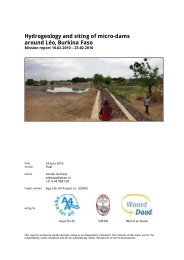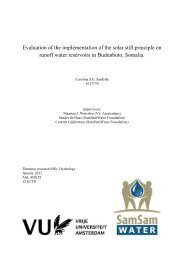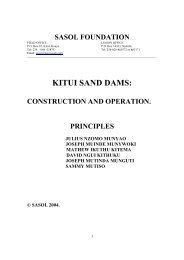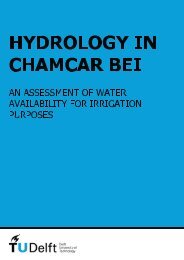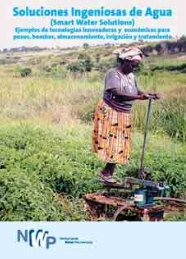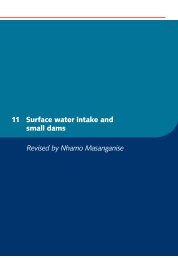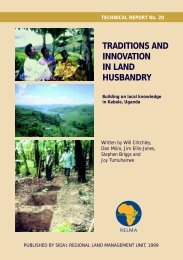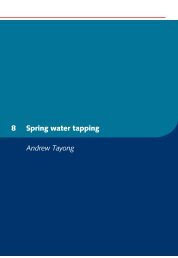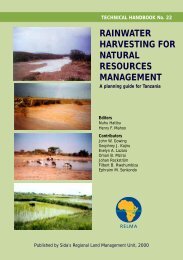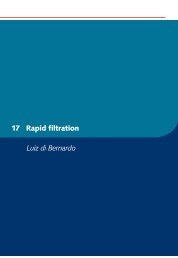Water from Small Dams
Water from Small Dams - SamSamWater
Water from Small Dams - SamSamWater
You also want an ePaper? Increase the reach of your titles
YUMPU automatically turns print PDFs into web optimized ePapers that Google loves.
It is a good idea to have an experiencedperson to inspect an excavated key and toadvise on selecting and compacting thebest soil for building a water-tight key.The best soil for a key is clayey soil whichcan be found using the seepage test inplastic bottles as described in Chapter 6.The soil is filled into an excavated key inlayers of 15 cm depth all along the lengthof the key.Where water is easily available it can beused to moisten the soil before it iscompacted. Where water is scarce, thesoil can be compacted without water ifall clayey lumps are broken into dust.The key has been excavated into solid soilwith some test pits to prove that there areno layers of sand underneath the key.The pipe seen on the photo drains a small stream of water through the dam wall. Whenthe dam wall is near completion, the pipe will be closed and the stream will fill the waterreservoir.Preferably, the soil should be compacted in15 cm thickhorizontal layers using a short length of a tree trunk with ahandle nailed onto its top as shown to the right.7.3 FoundationFoundations of earth dams, as well as keys, should be madewatertight to prevent seepage under the dam walls. This canbe achieved by removing all vegetation together with its rootsand all patches of sandy soil within the base of dam walls.The outline of the foundation for a dam wall is determined by the depth <strong>from</strong> the lineshowing the maximum water level to the ground and the upstream and downstreamslopes of a dam wall (gradients of batters).46



